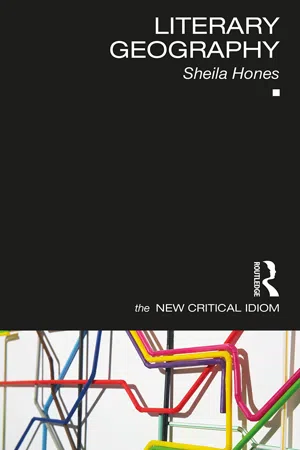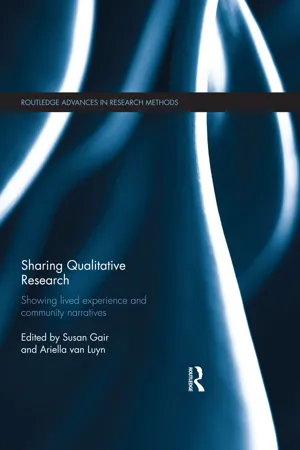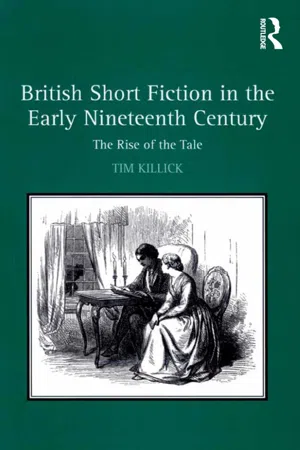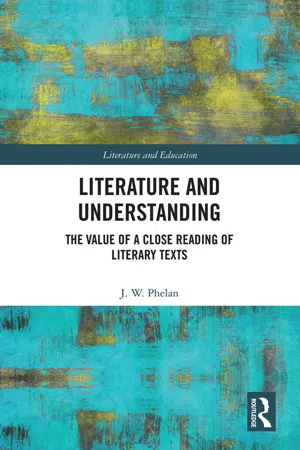Literature
Regional Fiction
Regional fiction is a literary genre that focuses on the customs, dialects, and landscapes of a particular region. It often portrays the lives of ordinary people and their struggles within the context of their environment. This genre is popular in American literature, with notable examples including William Faulkner's works set in the American South.
Written by Perlego with AI-assistance
Related key terms
5 Key excerpts on "Regional Fiction"
- Keith D. M. Snell(Author)
- 2017(Publication Date)
- Routledge(Publisher)
6 providing an unprecedented range of bibliographical coverage.The definition adopted in this book of 'Regional Fiction' is of fiction that is wholly or largely set in a particular geographical region, and which purports to describe or use recognisable and distinctive features of the life, customs, language, dialect or other aspects of that area's culture and people. I also include fiction that conveys a strong sense of local geography, topography or landscape, whether that be rural or urban. Many regional novels contain all these elements; others may be particularly strong in a representation of one or a few apparently regional features. Most such writing has been accepted into the definition here. It was felt most helpful to adopt a wide definition, and readers may if they wish narrow the bibliographical results down for their own purposes upon further reading. Applying any such definition will be a subjective matter for some novels, and much may depend upon the expectations and experience of individual readers. The above definition shares much with those adopted by other authors. For example, The Concise Oxford Companion to English Literature defines the regional novel as 'a novel set in a real and well-defined locality', a definition compatible with mine, and one that certainly has the advantage of brevity.7 In using such a definition, a few points should be stressed. Regional Fiction makes use of ideas of locality in a great variety of imaginative or realist ways, and an accuracy of match between fictional portrayal of place and a social historical reality, however that might be judged, is not one that has been doggedly insisted upon. In other words, I have included writers for whom the local or regional was important, even if they were influenced for example by fantasy or folklore. This broad definition of the subject allows it to overlap with other literary genres, such as regional romances, regional historical novels, fiction using local folklore, industrial novels, crime fiction, or novels that explore the relations of certain real or imagined individuals to particular places. It is not my intention that a definition of such novels as 'Regional Fiction' should eclipse or foreclose any other possible classification. Yet it is- eBook - ePub
- Sheila Hones(Author)
- 2022(Publication Date)
- Routledge(Publisher)
Genre has been a productive concept for literary geography in several ways. An awareness of the limitations of the field’s existing repertoire of ‘useful’ genres has on several occasions inspired the field in new directions, and as the priorities and aims of literary geographers have shifted over time and in tune with developments in geography more generally, new genres have come into prominence. In addition, as Marc Brosseau has pointed out (2017), thinking about genre also highlights the importance of the author–reader collaborations fundamental to a spatial approach to the negotiation of meaning. Citing Tzvetan Todorov’s work on genre, Brosseau points out that while a genre (such as ‘crime fiction’) provides an author with a writing model, to be followed or subverted, it also provides informed readers with a set of expectations which help structure their understanding and appreciation – or shape their resistance. Literary geography engages with the concept of genre for one more important reason: the priorities of literary geography having as much to do with ‘geographical relevance’ as ‘literary merit’, its repertoire of genres ranges particularly widely, from the more literary (for example, lyric poetry) to the more popular (such as detective fiction and comic books) even stretching to forms of creative writing which go beyond the scope of traditional genres (graffiti, for example, and sky writing).Regionalism
Work on literary fiction and the geography of regions dates back further than a century, originally concentrating on 19th-century realism. As discussed in the previous chapter, the benefits and disadvantages of this early orientation towards realism and the regional novel have been the subject of considerable debate. Regions are both actual and imagined, geographical areas which supersede the local and form parts of the national or transnational. They are inseparably connected to the texts through which they are articulated and by which they are shaped. In the USA, regional literary geography was often associated with the short story and with local colour fiction, as for example in Elias Lieberman’s The American Short Story: A Study of the Influence of Locality in Its Development (1912). The regional is not necessarily rural: Alison and Alistair McCleery’s ‘Personality of place in the urban regional novel’ (1981), for example, reads George Blake’s Glasgow novel The Shipbuilders - eBook - ePub
Sharing Qualitative Research
Showing Lived Experience and Community Narratives
- Susan Gair, Ariella van Luyn, Susan Gair, Ariella van Luyn(Authors)
- 2016(Publication Date)
- Routledge(Publisher)
Fuller argued that writers’ groups also give writers a sense of agency because they disrupt the power of a literary canon deemed to emanate from metropolitan areas. Fuller (2004, p. 40) stated that regional writers write out of the gap between dominant cultural narratives of the region, and that their stories are important to the expression of their own regional community identity. Importantly for locative literature, this agency is achieved through ‘a focus on local landscapes and histories’ (Fuller, 2002, p. 246). Place is therefore particularly significant for establishing regional writers’ sense of agency and identity.Place formation and writing: fiction as a form of place-making
However, the notions of regional place-making are complex and cannot be understood simply or rigidly. Griswold (2008, p. 13) stated that ‘regional writing expresses place. It also creates it.’ Griswold (2008) warned that ‘regionalism’ should not be taken at face-value, but understood as a label that can be as restrictive as it is empowering. In fact, Charlton, Wyse, Hodges, Nikolajeva, Pointon, and Taylor (2011) suggested that the regional/urban dichotomy should be avoided. Rather than being bounded by restrictive notions of location, the construction of place should be perceived as a process and as a ‘site of multiple identities and histories’ (Charlton et al. 2011, p. 65). Regional identity should not be understood as a single way of being, associated with parochialism or rigid boundaries (Charlton et al. 2011). Rather, as Fuller (2004) observed, local writing in Canada prompted literary critics to reject old-style literary regionalism altogether and to ‘reconfigure the Atlantic region as a cultural space that is open to articulations of difference’ (p. 30). Similarly, this project produced fiction that represented regional locations in a manner that avoided rigid stereotypes and presented multiple narratives. As demonstrated by the analysis of a number of place-based stories later in the chapter, the imaginative approach to place in fiction allowed a nuanced, multiple representation of location. - eBook - ePub
British Short Fiction in the Early Nineteenth Century
The Rise of the Tale
- Tim Killick(Author)
- 2016(Publication Date)
- Routledge(Publisher)
Chapter 4 Regionalism and Folklore Local Stories and Traditional Forms DOI: 10.4324/9781315570297-4The Regional Tale in the Early Nineteenth Century
My final chapter examines those tales and stories which derive from specific regions and which make reference to traditional or popular narratives. By re-engaging with material that could be considered as common cultural property and which predated contemporary society, much early-nineteenth-century short fiction contested the primacy of progressive, urban, and rationalist thought developed in the post-Enlightenment fiction of the late eighteenth century, and sealed by the arrival of the Scottian historical novel. Many stories with popular foundations also pertained to specific locations, and while the historical novel helped to connect the land to its place in a nation’s history, the short fiction of many writers celebrated the more mundane events that failed to make a ripple beyond their own small pond. In magazines and periodicals, regional stories, traditions, and folklore became increasingly popular. Eighteenth-century periodicals, such as the Gentleman’s Magazine, had occasionally printed articles about local customs and superstitions, but prior to the 1810s the publication of traditions was miscellaneous rather than systematic. Blackwood’s Edinburgh Magazine and the London Magazine were the most committed publishers of these stories, and both carried several prominent, extended sequences of regional tales by writers such as James Hogg and Allan Cunningham.1 In periodicals and in story collections, short fiction appeared which claimed identification with all of the main national identities within Britain and Ireland, as well as many smaller provincial regions.1 See Chapter 1 - eBook - ePub
Literature and Understanding
The Value of a Close Reading of Literary Texts
- Jon Phelan(Author)
- 2020(Publication Date)
- Routledge(Publisher)
Fiction is a species of language use (applied to names, sentences and discourses) and is neutral as to value. Literature, even in the narrowest sense applied to imaginative and creative writing, is a kind of discourse, essentially valued, which affords and invites a distinctive kind of appreciation.(Lamarque 2014: 69)Actually, ‘fiction’ is subject to evaluation on some occasions. Karl May was condemned when his novels set in the Wild West, and reputedly based on fact, were revealed as fiction. In this instance, the disappointment of many readers extended beyond disappointment at being hoodwinked to dissatisfaction at being left with ‘mere fiction’. In another type of case, fiction may be criticised for containing factual inaccuracy. A novel set in Cambridge which contains the line ‘I left Magdalene College and walked across the road to the Fitzwilliam Museum’ contains a factual accuracy and one that would disturb a reader familiar with the city. Let us also imagine that this detail served no purpose in the novel so could not be excused as ‘poetic license’. This type of case results in a kind of imaginative resistance, of a non-moral kind, which leads to a negative evaluation of the work. Here genre convention plays a role in evaluation. If the novel is realist fiction and if a particular detail is wrong about the subject depicted, then the novel may be criticised for containing an error. In this second example, the work is criticised for being ‘too fictional’ given the genre conventions of realist fiction.Nevertheless, it is true that describing a work as a work of ‘fiction’ is not usually evaluative but the kind of categorisation publishers use to help readers distinguish what is invented from what is fact; for instance, to differentiate ‘true crime’ from ‘detective fiction’. In contrast, calling a work ‘literature’ is predominantly evaluative and involves some form of aesthetic appreciation. This kind of literary appreciation seems separate from personal preference; I may recognise a late Henry James novel as literature without the work being to my taste. The upshot of this brief discussion is that I am loath to dismiss the evaluative aspect of literature as it corresponds with our ordinary usage of the term and captures something of the Gestalt of reading a text as a work of literature.
Index pages curate the most relevant extracts from our library of academic textbooks. They’ve been created using an in-house natural language model (NLM), each adding context and meaning to key research topics.




